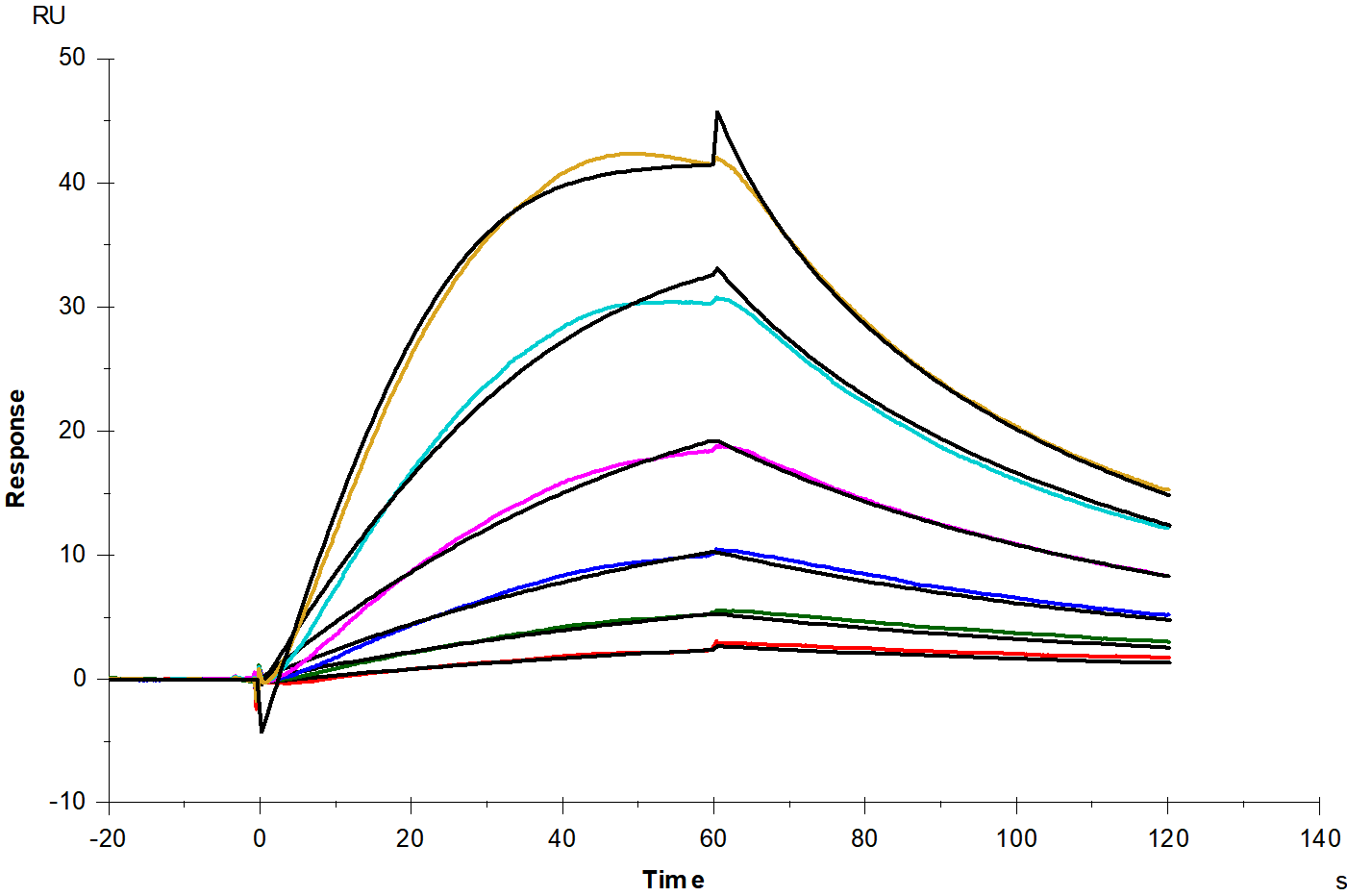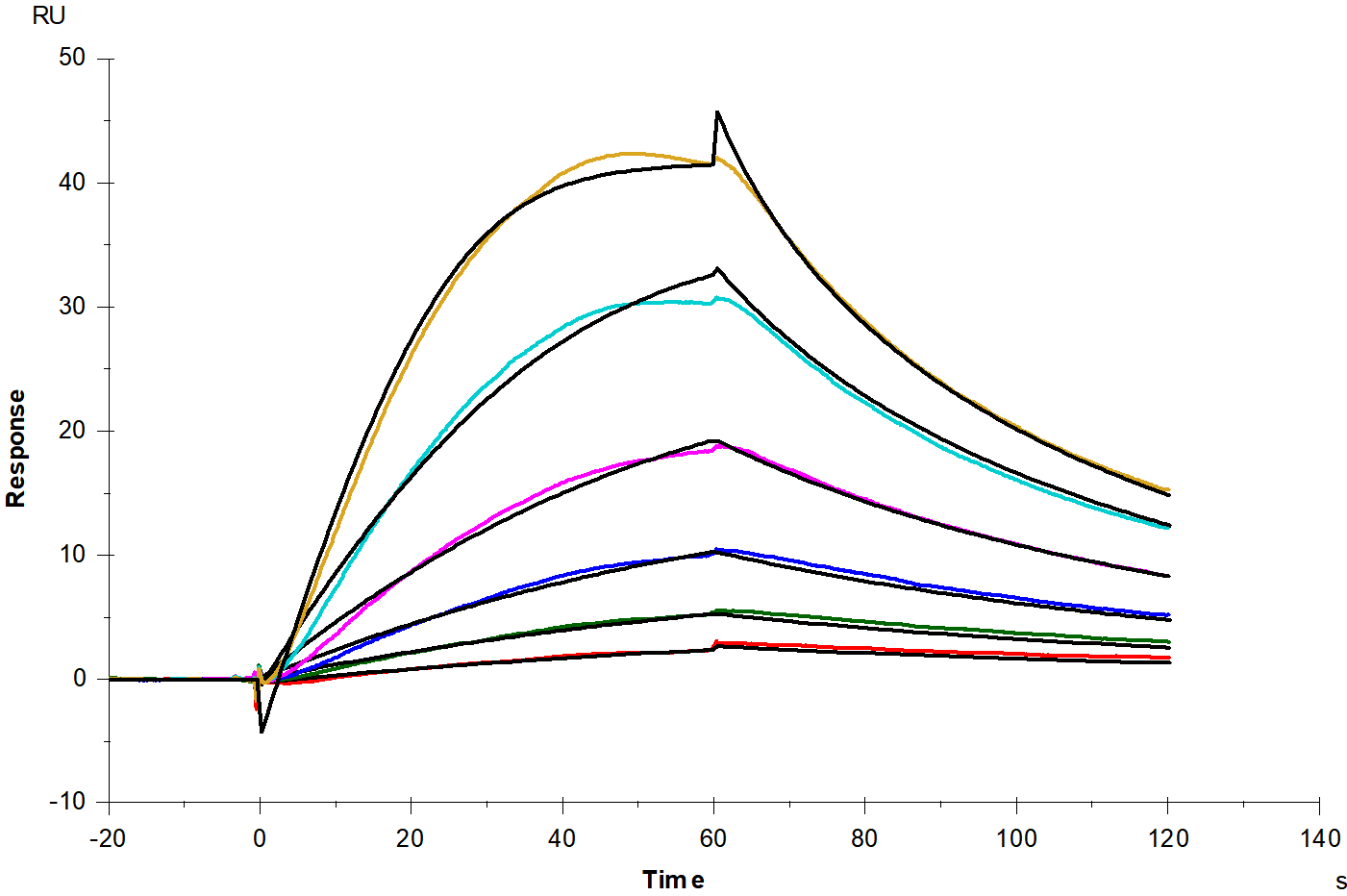Measured by its ability to inhibit the IL-4-dependent proliferation of HT‑2 mouse T cells. The EC50 for this effect is less than 0.2ng/ml.
Product Details
Product Details
Product Specification
| Species | Human |
| Synonyms | Transforming growth factor beta-2 proprotein, Cetermin, Glioblastoma-derived T-cell suppressor factor, G-TSF |
| Accession | P61812 |
| Amino Acid Sequence | Ala303-Ser414 |
| Expression System | HEK293 |
| Molecular Weight | 12 kDa (Reducing) |
| Purity | >95% by SDS-PAGE and HPLC. |
| Endotoxin | <0.1EU/μg |
| Conjugation | Unconjugated |
| Tag | No Tag |
| Physical Appearance | Lyophilized Powder |
| Storage Buffer | 4mM HCl |
| Reconstitution | Reconstitute at 0.1-1 mg/ml according to the size in reconstitution buffer after rapid centrifugation. |
| Stability & Storage | ·12 months from date of receipt, lyophilized powder stored at -20 to -80℃. |
| Reference | Signal Transduct Target Ther. 2024 Mar 22;9(1):61. |
Background
TGF-β2 (Transforming Growth Factor-beta 2) is a secreted, 25 kDa disulfide-linked homodimeric cytokine and one of three mammalian TGF-β isoforms. It is synthesized as a 414-aa pre-pro-peptide; after removal of the signal peptide and cleavage of the latency-associated peptide (LAP), the mature 112-aa chain forms the biologically active ligand. TGF-β2 is abundant in bone, cartilage, cornea, kidney, platelets and immune cells, and its expression is rapidly up-regulated after injury or in fibrotic disease. Compared with TGF-β1, TGF-β2 exhibits ~71 % sequence identity but shows distinct promoter regulation and a stronger association with epithelial and neuronal tissues.
TGF-β2 signals through the canonical type II–I receptor serine/threonine kinases TβRII and ALK5, phosphorylating Smad2/3. Phospho-Smad complexes with Smad4 translocate to the nucleus to regulate >500 genes. Non-Smad pathways—PI3K/Akt, mTORC2, MAPK, JAK/STAT3, Rho-GTPases—mediate additional effects on cell survival, migration and EMT.
Picture
Picture
Bioactivity
SDS-PAGE
2μg (R: reducing condition, N: non-reducing condition).
RP-HPLC
>95% as determined by RP-HPLC.
SPR

Protein A Chip captured TGFBR2 Fc Chimera Protein, Human (Cat. No. UA010650), can bind TGF-β2 Protein, Human (Cat. No. UA040490) with an affinity constant of 5.73nM as determined in SPR assay.


